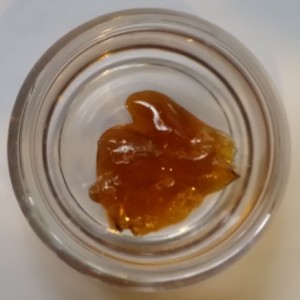When it comes to marijuana concentrates and drug paraphernalia, what constitutes drug paraphernalia?
 Paraphernalia is defined as equipment necessary to conduct a particular activity. In the case of concentrates, the term will typically be used by a prosecutor to mean items used to possess, consume, test, or process a concentrate. When paraphernalia is present, a prosecutor can file a charge for possession or use, or manufacture. A prosecutor can file a single count with only one item of paraphernalia or multiple counts with a collection of items.
Paraphernalia is defined as equipment necessary to conduct a particular activity. In the case of concentrates, the term will typically be used by a prosecutor to mean items used to possess, consume, test, or process a concentrate. When paraphernalia is present, a prosecutor can file a charge for possession or use, or manufacture. A prosecutor can file a single count with only one item of paraphernalia or multiple counts with a collection of items.
The number and types of charges that a prosecutor files is up to The People. What result does the state want from the defendant? Does it want to slap them on the wrist for illegal use or send them to prison for dangerous manufacture?
Typically, in order for a judge or jury to find the defendant guilty beyond a reasonable doubt, there must be a trace of concentrate on the item. If the item is clean, The People has a weaker case.
Whether the items must have concentrate on them depends on the charge. For example, in order to charge a defendant with possession of concentrate, there usually must be some residue of concentrate on an item. In order to charge a defendant with manufacture of concentrate, all that may be necessary is some residue of unprocessed cannabis on an item.
Say a law enforcement officer broke into a house where a defendant was making concentrate in a kitchen. The defendant was holding an extractor tube with marijuana trim and butane in it, but the mixture had not yet been made into concentrate. In this instance, the prosecutor could charge the defendant with manufacture of concentrate. The evidence would clearly show that the defendant was engaged in the act of processing concentrate even though concentrate had not yet been formed.
Individuals who are caught using a concentrate and do not have a recommendation for medical marijuana can be charged with possession and/or use of the concentrate (concentrated cannabis), a violation of California Penal Code § 11357 (a). The punishment, at the time of this writing, is imprisonment in a county jail for up to a year and/or a fine up to $500.
Individuals can also be charged with possession of drug paraphernalia, a violation of California Health and Safety Code 11364 (a). This charge is a misdemeanor, with a sentence, at this time of writing, of 15 days to 6 months of incarceration.
Individuals who have a recommendation for medical marijuana can possess or use a concentrate.
No one is allowed to manufacture concentrate. Making concentrate by means of chemical extraction is a felony and a violation of California Health and Safety Code § 11379.6 (a). The punishment, at this time, is a term of imprisonment to 3, 5, or 7 years and/or a fine up to $50,000.
Manufacturing concentrate by means of chemical extraction is a violation of California Health and Safety Code § 11358. This type of manufacture, termed “unauthorized processing of marijuana,” is a felony punishable by a term of imprisonment of 16 months, 2 years, or 3 years, at this time.
Items used to possess a concentrate include:
- Glass “oil bowl”
- Glass or plastic vials
- Plastic bags
- Tupperware containers
- Wooden bowls
- Any item used to hold the concentrate
Items used to consume concentrates include:
- Dabbing spoon or stick, typically glass or metal. A paper clip or safety pin can be used as a dabbing stick.
- Specialized equipment such as a glass adapter, coupler, oil needle, or oil rig (skillet and nail styles)
- E-cigarettes or e-vapes (vape pens)
- Rolling papers
- Straws
- Hot knife
- Bong
- Glass bowl
- Blowtorch, cigarette lighter, or hot plate
- Aquarium rocks (heated up with a torch in a glass bowl)
- Health Stone pipes and bowls (these are contain a small porous stone that soaks up oil, which can then be heated and inhaled.)
Items used to manufacture a concentrate include:
- Extractor tube: an aluminum, stainless steel, PVC, glass, or plastic pipe
- Coffee filter (put on one end of the pipe)
- Rubber stopper (put on the other end of the pipe, to inject butane into the pipe)
- Plate (to dry the oil)
- Pyrex, metal, or glass baking dishes (to heat the oil, hastening the manufacturing process)
- Solvents: isopropyl alcohol, ethanol, methyl alcohol, butane (lighter fluid), isobutene, and frozen CO2 (dry ice)
- Aluminum foil
- Hotplate, oven, or blowtorch
A prosecutor is far less likely to charge a defendant with possession, consumption, or manufacture of a concentrate if the item recovered was extremely common (such as a knife) and did not have any trace of residue of unprocessed cannabis or concentrate on it.
Connect